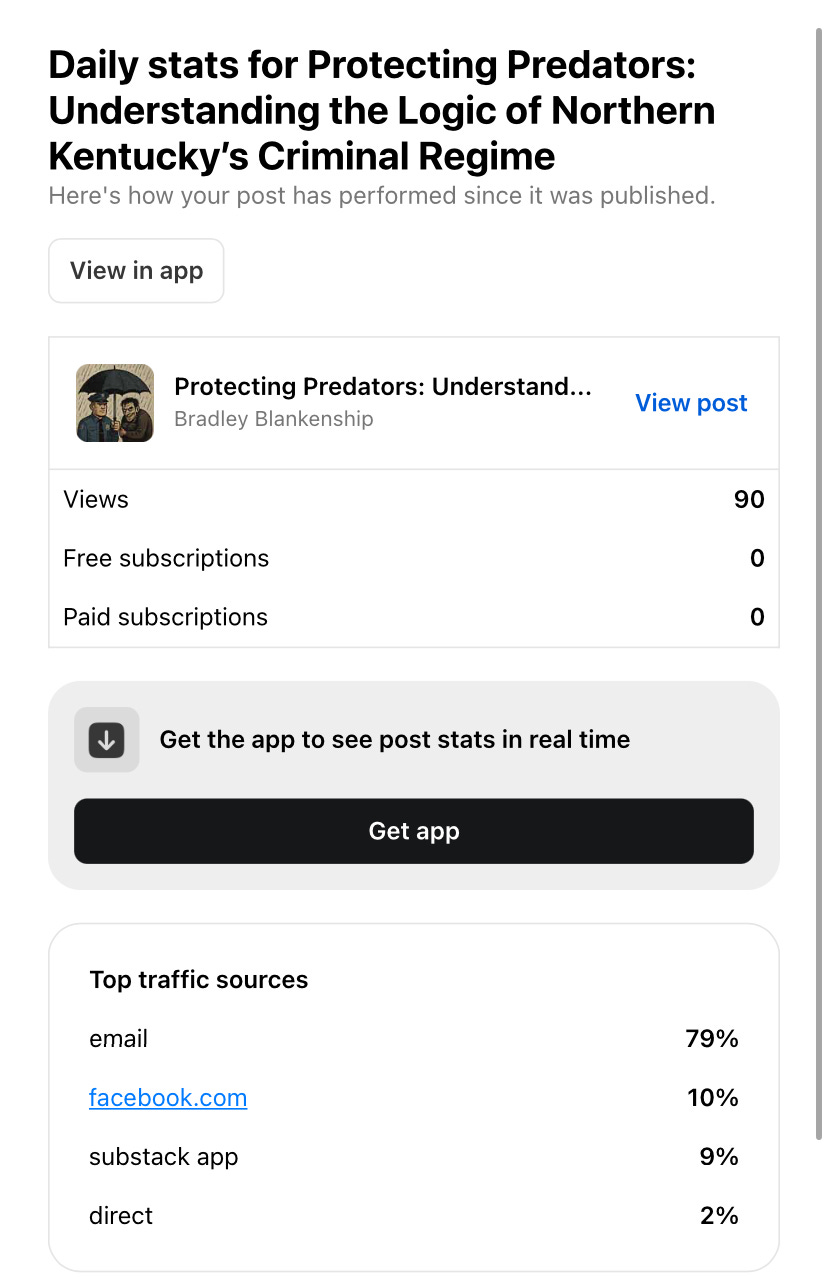How I Just Ran a Counter-Surveillance Operation Using Substack
How a single essay—strategically distributed—may have exposed internal circulation patterns within the very institutions under scrutiny.
Sometimes the most effective intelligence tools aren’t classified or proprietary—they’re free, open, and deceptively simple. Yesterday, I used one of them: Substack. With a single targeted release, I was able to observe what appears to be probable lateral circulation within the very institutions I’ve been investigating.
To be clear, I’m not claiming—with absolute certainty—that I’ve proven internal monitoring or interdepartmental reaction. But based on the analytics, timing, and behavioral context, the evidence strongly suggests this was no ordinary post.
This was a calibrated drop, designed to detect movement.
The Setup
For about two months, I’ve been publishing a series of essays on systemic corruption in Northern Kentucky, Cincinnati, and beyond—essays that some have found deeply unsettling, particularly those who prefer shadows to scrutiny. With each piece, I’ve also maintained a controlled distribution strategy: a small social media push and then sending select essays directly to specific individuals within the network I’ve been investigating as a form of psychological pressure. My goal wasn’t exposure; it was observation.
The pattern held—until this last piece.
This time, I expanded the net slightly. The post, which dissected the ideological framework sustaining institutional abuse across the region, was deliberately sent to a broader set of targets—still precise, still strategic. The idea was to see if it triggered internal movement.
What Happened Next
Despite only 35 subscribers and no promotional push beyond what I normally do, minus a broadened targeted distribution to investigative targets, the piece generated 90 views in less than 24 hours, a roughly 300% increase compared to baseline. That, by itself, is unusual in terms of behavioral analysis.
The analytics breakdown caught my attention:
79% of views came through direct email opens
Multiple open events appeared to originate from outside of my circulation base
No evidence of broader public sharing or amplification
In short: the data suggests probable internal forwarding—what intelligence professionals might call lateral circulation.
The post traveled not through public discourse, but through internal channels. And the only group I sent it to—outside my follower list—were individuals tied directly to the very institutions I’ve named in my investigation.
What This Indicates
Again, I’m not asserting this proves, beyond a reasonable doubt, that a counter-surveillance success occurred. But when you consider:
The post’s sensitive and damning content
Its sharply limited distribution
The sudden increase in direct, email-based viewership
The institutional patterns I’ve observed for months
…it becomes difficult to dismiss the likelihood that this essay triggered some internal movement, at the very least among those it was intended to reach.
It may have even been shared more broadly among risk management personnel or legal counsel. That’s speculative—but not implausible. However, it does mean that this post’s circulation and its accompanying metadata will likely be available for discovery in the future, potentially revealing new nodes in the network I am investigating.
Strategic Implications
This is the use of open-source narrative infrastructure to generate real-time feedback from power-holding institutions. The piece itself served not only as analysis—but as a sensor. And based on the reaction, it appears those institutions noticed.
Whether this qualifies as a full counter-surveillance operation is open to interpretation. But from where I sit, the outcome is clear: something changed, and that is enough to raise questions. And from all available data, the only variable that changed was my targeted distribution to specific targets.



